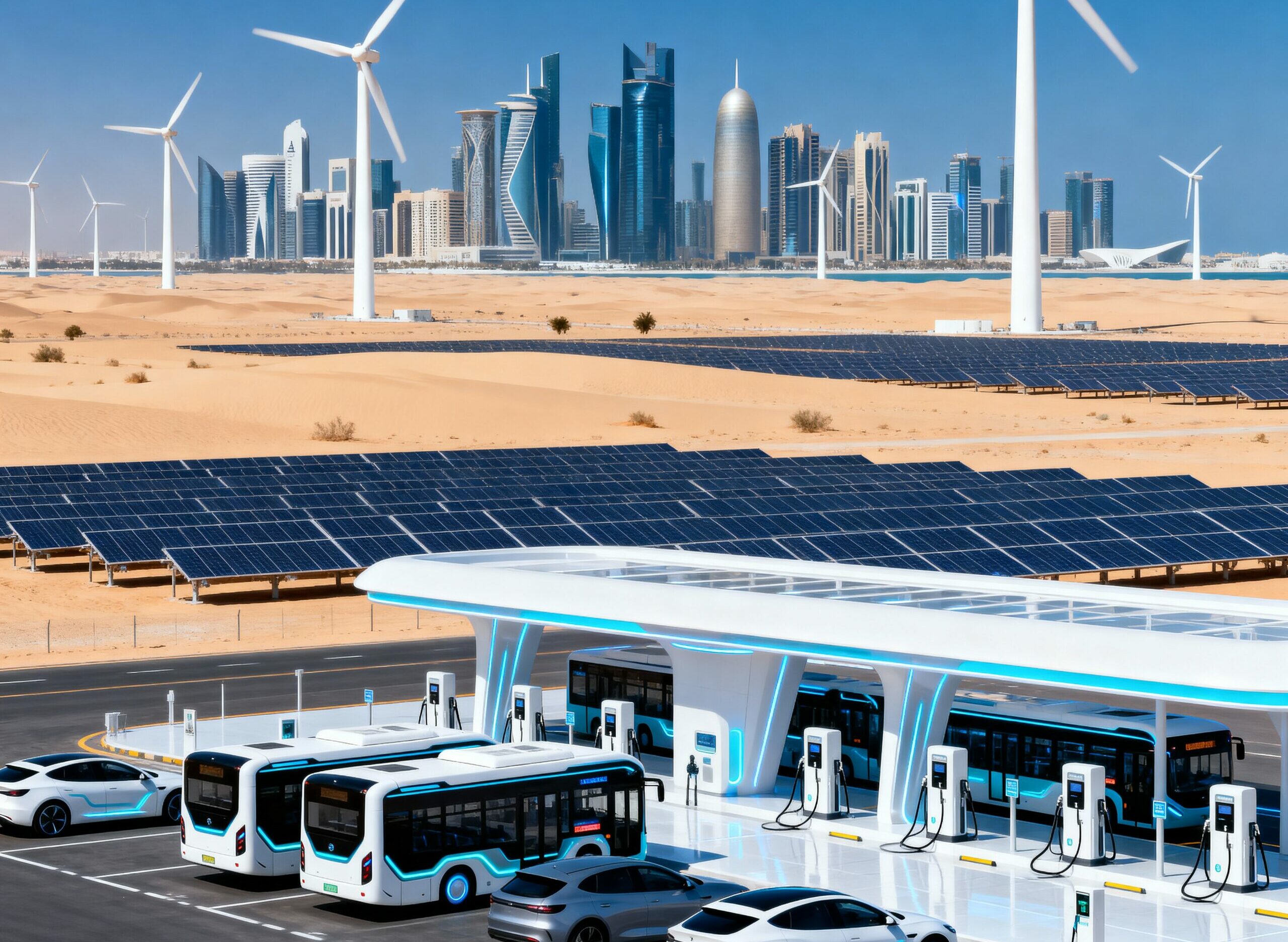The UAE’s clean-mobility roadmap moves past electric vehicles to embrace hydrogen, autonomy, and data-driven infrastructure. Interoperability, not just innovation, will define who wins.
The UAE’s New Mobility Ambition
The UAE is no longer content to be a follower in the global EV race. While the U.S. and China compete over electric dominance, Abu Dhabi is quietly designing a full-spectrum mobility ecosystem — integrating electric, hydrogen, and autonomous transport into a single national roadmap.
The UAE’s National Hydrogen Strategy 2050, launched this year, positions the country as a top global producer of low-carbon hydrogen. At the same time, Abu Dhabi’s Integrated Transport Centre (ITC) is deploying digital infrastructure that links EV charging stations, smart traffic systems, and autonomous vehicle pilots under one platform.
This is mobility as infrastructure, not mobility as consumer product. The UAE is building the connective tissue of a green economy — one where mobility data becomes a national asset.
Beyond Electric: The Hydrogen and Autonomy Play
EVs remain central to the transition — the UAE targets 42,000 electric vehicles on its roads by 2030, supported by fast-charging corridors across all seven emirates. Yet the next wave of investment is flowing toward hydrogen mobility and autonomous logistics.
Hydrogen offers a solution to the energy-density problem that limits long-haul transport and heavy industry. Projects like ENOWA (NEOM) in Saudi Arabia and Masdar’s hydrogen mobility pilots in the UAE show that the region is aligning its energy exports with its mobility future.
Meanwhile, autonomy is redefining logistics economics. Abu Dhabi’s Hub71 is home to startups like WeRide and TXAI, testing driverless vehicles on public roads — not as a gimmick, but as an operational model for future fleets. These systems rely on real-time data interoperability between vehicles, roads, and energy grids — the glue that determines performance and trust.
Data Is the New Fuel of Mobility
As more vehicles become sensors, mobility is becoming a data business. The question is no longer how to decarbonize transport, but how to connect it.
Abu Dhabi’s advantage lies in its centralized governance model — allowing coordinated regulation of data, infrastructure, and investment. Unlike fragmented markets, the UAE can set interoperability standards across transport operators, grid providers, and digital platforms.
This is where the next wave of value will be created:
- Data interoperability enables predictive maintenance and optimized energy flow.
- Open mobility APIs attract ecosystem innovation without losing control of national infrastructure.
- Cross-sector data exchange (energy + transport + logistics) creates entirely new business models.
In short: clean mobility without data alignment is just electrified chaos. The UAE’s real bet is on control — not of technology, but of the systems that integrate it.
Building the Interoperable City
A truly green city isn’t one where every car is electric — it’s one where mobility systems talk to each other. That’s the future Abu Dhabi is designing.
The emirate’s Smart Mobility Strategy 2030 calls for “mobility-as-a-service” integration — linking ride-sharing, public transport, EV charging, and micromobility under a single digital layer. This platform approach is being developed alongside Etihad Rail’s digital logistics spine, suggesting that mobility and freight will soon converge into one data-driven network.
For policymakers, the challenge is technical and institutional:
- How to share data across public and private systems without compromising security.
- How to price mobility services dynamically using real-time energy and demand data.
- How to ensure standards are future-proof across autonomous, hydrogen, and EV technologies.
The cities that solve these interoperability puzzles first will capture the next trillion-dollar mobility market.
Looking Ahead
Abu Dhabi’s clean-mobility bet is bigger than electric cars — it’s a systemic play for digital sovereignty in the next energy economy. The UAE understands that data networks will define value capture in transport, just as pipelines once did for oil.
Hydrogen, autonomy, and AI are simply layers in a larger architecture of national competitiveness. The countries that design interoperable mobility systems — not just cleaner vehicles — will own the infrastructure of the 21st century.
Follow Tomorrowist for more insights on innovation, deep tech, and value creation.





